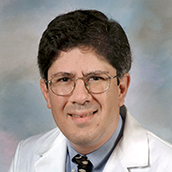Last month, a panel comprised of three subject matter experts and members of the AGA Future Leaders program came together to talk about the critical issue of physician burnout — including how we can identify this in ourselves and others, as well as work to prevent it.
Meet the presenters

Arthur DeCross, MD, AGAF

Pooja Singhal, MD, FACG DABOM

Patrick Hickey, DO
How prevalent is the issue?
According to surveys conducted by AGA and ASGE, approximately 50 percent of respondents felt burnt out, with women experiencing rates of burnout that were 10-12 percent higher than men.
One point expressed throughout the presentation is that burnout is not necessarily a “yes” or “no” answer, but can come in degrees and constantly fluctuate.
What ISN’T burnout?
- Burnout is not a state of clinical depression
- Burnout is not working in a high-stress scenario (although this could be a contributor)
- Burnout is not a deficit in resiliency
- Burnout is not a complete loss of purpose
- Burnout is not a physician’s fault
We don’t want to confuse burnout with some of the other situations above. Rather, burnout is defined by the presenters as a work-specific emotional and mental exhaustion.
How can we identify burnout?
As the presenters point out, burnout can be difficult to identify since it manifests itself differently in different individuals. Dr. DeCross shared that a common identifier for males can be displacing their stress onto others, while females can often become withdrawn, displaying early depressive behavior and symptoms.
One way in which we can identify burnout is by being aware of changes in our colleagues. You are not expected to be a therapist for others, but can check in when you notice that something seems off.
We should also take responsibility for self-reflection in order to recognize it in ourselves. By becoming more cognizant of our specific triggers that cause burnout, we can proactively work to prevent them.
What are some GI-specific drivers of burnout?
While roughly half of GIs report experiencing burnout, many of the drivers of burnout were not GI-specific. Here were a few of the top drivers discussed:
- Working on evenings and weekends
- Loss of control in the workspace, for example, insurance companies making the decisions on which treatments you can prescribe for patients
- Specifically for trainees and fellows – a need to prove themselves by working harder which can lead to sacrificing things like sleep and exercise
What resources can I use?
- National Academy of Medicine – Resource Compendium for Health Care Worker Well-Being
- AMA: Burnout and well-being toolkits
- Upcoming AGA webinars
- Hospital wellness committees
- State or county medical societies
Additional tips from presenters
- Create a “boundary ritual” to separate your workday from your personal life, such as cooking or taking a long walk
- Focus first on scheduling sleep, mealtimes, exercise, and time with family and friends to keep your mental health strong, with work coming after these priorities
- Build in and prioritize vacation time when you know you will need it; another tip is to always take a day for yourself before going back to work after a trip or vacation
- Connect with a community
- Try professional counseling and coaching
- Become involved with teaching, research or volunteer opportunities, these were found in surveys to be counteractive for burnout
- Advocate for and be the change you want to see for systemic factors causing burnout












